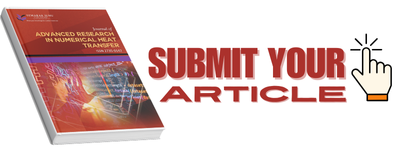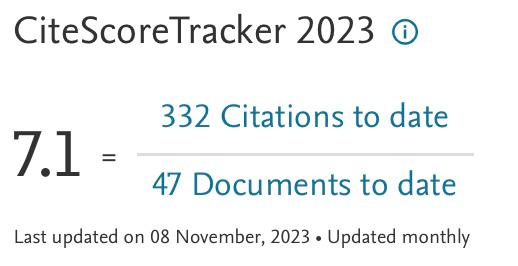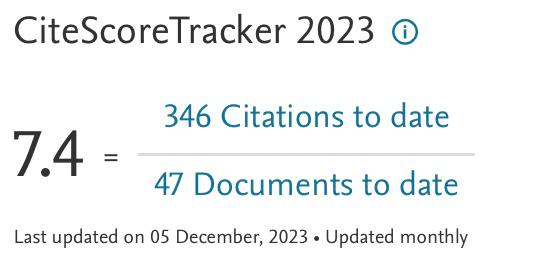A Proposed Seaplane Float in Water Entry Problem and Landing in Waves using Particle Based Method
DOI:
https://doi.org/10.37934/arnht.13.1.3138Keywords:
Seaplane float, Water entry, Landing waves, Particle based method, Smoothed Particle Hydrodynamics, DualSPHysicsAbstract
Seaplane is the newly transportation mode which is developed in the Indonesian Archipelago Region. Originally, the seaplane is equipped by pair of the floats in function to withstand the aircraft load and maintain the seaplane on the water stably. One of the critical moments in the seaplane operation is in the landing phase in waves. The failure in the float performance can be led into severe conditions, even the capsize. In this paper, the aims are to determine the water impact characteristics and response of the proposed seaplane float by implementing the water entry case, calm water landing, and when landing in the periodic waves condition. The numerical model was developed using DualSPHysics based on Smoothed Particle Hydrodynamic to obtain more realistic and accurate prediction of the pressure, velocity fields, and water spray motion with droplets in complex shape of the float. According to numerical results and reproducible experimental data in this study, the 2D water entry and 3D calm and waves water problem were applied to reproduce the detailed characteristics of the interaction between the proposed seaplane float and the water surface with splashing. The paper showed that the developed model could be a useful tool to design the seaplane float for Indonesian seaplane in the future
Downloads
References
Dirgantara Indonesia. "Aircraft Product." Dirgantara Indonesia, 2023. https://www.indonesian-aerospace.com/.
Del Buono, Alessandro, Giovanni Bernardini, Alan Tassin, and Alessandro Iafrati. "Water entry and exit of 2D and axisymmetric bodies." Journal of Fluids and Structures 103 (2021): 103269. https://doi.org/10.1016/j.jfluidstructs.2021.103269
Oger, Guillaume, Mathieu Doring, Bertrand Alessandrini, and Pierre Ferrant. "Two-dimensional SPH simulations of wedge water entries." Journal of Computational Physics 213, no. 2 (2006): 803-822. https://doi.org/10.1016/j.jcp.2005.09.004
Chen, Cheng, A-Man Zhang, Jian-Qiang Chen, and Yan-Ming Shen. "SPH simulations of water entry problems using an improved boundary treatment." Ocean Engineering 238 (2021): 109679. https://doi.org/10.1016/j.oceaneng.2021.109679
Farsi, Mohammad, and Parviz Ghadimi. "Finding the best combination of numerical schemes for 2-D SPH simulation of wedge water entry for a wide range of deadrise angles." International Journal of Naval Architecture and Ocean Engineering 6, no. 3 (2014): 638-651. https://doi.org/10.2478/IJNAOE-2013-0202
Yang, Qiuzu, Fei Xu, Yang Yang, and Jingyu Wang. "Two-phase SPH model based on an improved Riemann solver for water entry problems." Ocean Engineering 199 (2020): 107039. https://doi.org/10.1016/j.oceaneng.2020.107039
Woodgate, Mark A., George N. Barakos, Nigel Scrase, and Tim Neville. "Simulation of helicopter ditching using smoothed particle hydrodynamics." Aerospace Science and Technology 85 (2019): 277-292. https://doi.org/10.1016/j.ast.2018.12.016
Guo, Baodong, Peiqing Liu, Qiulin Qu, and Jiawen Wang. "Effect of pitch angle on initial stage of a transport airplane ditching." Chinese Journal of Aeronautics 26, no. 1 (2013): 17-26. https://doi.org/10.1016/j.cja.2012.12.024
Zheng, Yunlong, Qiulin Qu, Peiqing Liu, Xueliang Wen, and Zhicheng Zhang. "Numerical analysis of the porpoising motion of a blended wing body aircraft during ditching." Aerospace Science and Technology 119 (2021): 107131. https://doi.org/10.1016/j.ast.2021.107131
Xiao, Tianhang, Ning Qin, Zhaoyan Lu, Xuan Sun, Mingbo Tong, and Zhengzhong Wang. "Development of a smoothed particle hydrodynamics method and its application to aircraft ditching simulations." Aerospace Science and Technology 66 (2017): 28-43. https://doi.org/10.1016/j.ast.2017.02.022
Syamsuar, Sayuti, Erwandi Erwandi, Bagiyo Suwasono, Sutiyo Sutiyo, Nina Kartika, Adityo Suksmono, Annissa Roshyntawati et al. "Numerical simulation for floater design on the 17 passengers capacity of N219 amphibian in static and dynamic condition." In AIP Conference Proceedings, vol. 2646, no. 1. AIP Publishing, 2023. https://doi.org/10.1063/5.0132289
Ardiansyah, Riki, and Mohammad Adhitya. "Simulation of float of 19 passenger aircraft during landing on water surface." In IOP Conference Series: Materials Science and Engineering, vol. 694, no. 1, p. 012005. IOP Publishing, 2019. https://doi.org/10.1088/1757-899X/694/1/012005
Kawamura, Kouki, Hirotada Hashimoto, Akihiko Matsuda, and Daisuke Terada. "SPH simulation of ship behaviour in severe water-shipping situations." Ocean Engineering 120 (2016): 220-229. https://doi.org/10.1016/j.oceaneng.2016.04.026
González-Cao, José, Corrado Altomare, Alejandro JC Crespo, J. M. Domínguez, Moncho Gómez-Gesteira, and Dogan Kisacik. "On the accuracy of DualSPHysics to assess violent collisions with coastal structures." Computers & Fluids 179 (2019): 604-612. https://doi.org/10.1016/j.compfluid.2018.11.021
Crespo, Alejandro JC, José M. Domínguez, Benedict D. Rogers, Moncho Gómez-Gesteira, S. Longshaw, R. J. F. B. Canelas, Renato Vacondio, Anxo Barreiro, and Orlando García-Feal. "DualSPHysics: Open-source parallel CFD solver based on Smoothed Particle Hydrodynamics (SPH)." Computer Physics Communications 187 (2015): 204-216. https://doi.org/10.1016/j.cpc.2014.10.004
Iafrati, Alessandro, Silvano Grizzi, and Flavio Olivieri. "Experimental investigation of fluid-structure interaction phenomena during aircraft ditching." AIAA Journal 59, no. 5 (2021): 1561-1574. https://doi.org/10.2514/1.J059458
Qu, Qiulin, Cangsong Liu, Peiqing Liu, Baodong Guo, and Ramesh K. Agarwal. "Numerical simulation of water-landing performance of a regional aircraft." Journal of Aircraft 53, no. 6 (2016): 1680-1689. https://doi.org/10.2514/1.C033686


























